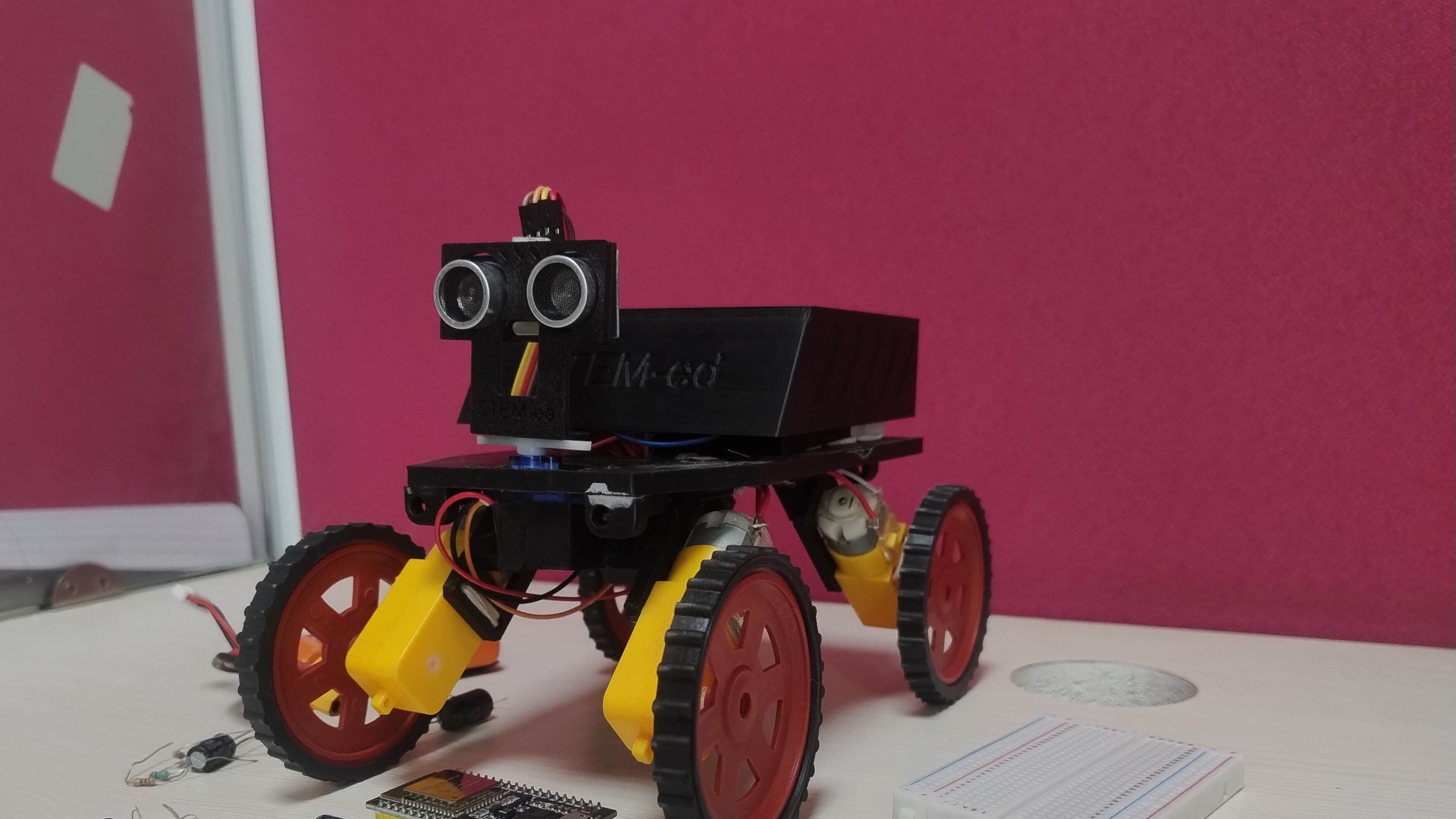
Bluetooth Robotics
Build, code, and control your very own robotic car.
Who is this for?
Students from Class 7 to 12. Perfect for beginners and those with some experience.
What you'll achieve
A fully functional, app-controlled robotic car, a certificate of completion, and a strong foundation in robotics.
Hardware Kit
Kits are provided during the session. Options for purchase are available.
Our Workshop Curriculum: A Deep Dive Into STEM
At STEM-ED, we're committed to providing a hands-on, engaging, and educational experience. Our workshops are meticulously designed by our team from IIT Patna to bridge the gap between theory and real-world application. Below is a detailed look at what students will learn in each of our workshop formats.
Day 1: Introduction to Robotics and Electronics
Learning Objectives
- Grasp the fundamental concepts of basic electronic circuits.
- Understand the core principles of voltage, current, and resistance.
Schedule of Activities
- Session 1: Core Concepts: An interactive introduction to the basics of Voltage, Current, Resistance, and the difference between AC and DC.
- Session 2: Hands-on Lab: Students will build their first basic LED and resistor circuit on a breadboard.
STEM Concepts Covered
Ohm's Law, basic circuitry, and the practical application of electronic components.
Day 2: Components and Sensors
Learning Objectives
- Learn to interface various electronic components.
- Understand how to read and interpret data from sensors.
Schedule of Activities
- Session 1: Component Deep Dive: Introduction to resistors, LEDs, relays, and both IR (Infrared) and Ultrasonic sensors.
- Session 2: Practical Application: Students will control a lamp using a relay and build a circuit for obstacle detection using an IR sensor.
STEM Concepts Covered
Sensor technology, automation basics, and component interfacing.
Day 3: Getting Started with ESP32
Learning Objectives
- Successfully configure an ESP32 microcontroller.
- Learn to interact with the ESP32 through a web browser.
Schedule of Activities
- Session 1: ESP32 Basics: A walkthrough of the ESP32 pinout, boot/reset procedures, and setting up the IDE (Integrated Development Environment).
- Session 2: First Program & Web Server: Students will write their first "Blink LED" sketch and host a simple web server on the ESP32.
STEM Concepts Covered
Microcontroller programming, embedded systems, and basic web server hosting.
Day 4: Motor Control with PWM
Learning Objectives
- Understand and utilize PWM (Pulse Width Modulation) for motor control.
- Achieve precise positioning with servo motors.
Schedule of Activities
- Session 1: Theory of Motion: An introduction to H-Bridge motor drivers and the fundamentals of PWM.
- Session 2: Hands-on Control: Students will control the speed and direction of a DC motor and program a servo to perform a sweeping motion.
STEM Concepts Covered
PWM, motor physics, and robotic actuators.
Day 5: Wireless Communication with ESP32
Learning Objectives
- Enable device control using both BLE (Bluetooth Low Energy) and Wi-Fi.
Schedule of Activities
- Session 1: Wireless Protocols: An overview of Bluetooth Low Energy (BLE) and REST APIs.
- Session 2: IoT in Action: Students will use a mobile app to toggle an LED via BLE and send HTTP JSON commands to the ESP32 over Wi-Fi.
STEM Concepts Covered
IoT (Internet of Things), wireless communication protocols, and API interaction.
Day 6: Capstone Project 1 - Bluetooth Car
Learning Objectives
- Build a fully functional BLE-controlled robotic car.
Schedule of Activities
- Full Day Project: Students will assemble the car's hardware, focusing on chassis design and steering mechanics. They will then upload and debug the control code, concentrating on the BLE firmware.
STEM Concepts Covered
Mechanical design, firmware development, and systems integration.
Day 7: Capstone Project 2 - Smart Home Automation
Learning Objectives
- Create a working home automation system that can be controlled by voice.
Schedule of Activities
- Full Day Project: Students will build a two-channel smart switch. The focus will be on enabling cloud connectivity with services like Google Home or Alexa for voice-activated control.
STEM Concepts Covered
Cloud computing, voice recognition technology, and smart systems.